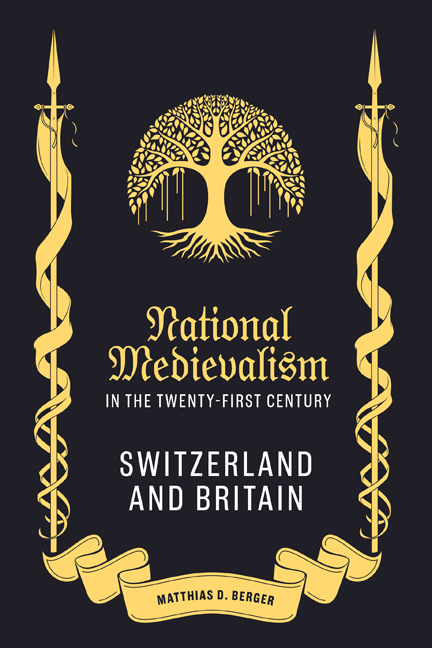Book contents
- Frontmatter
- Dedication
- Contents
- List of Illustrations
- Acknowledgements
- Author’s Note
- List of Abbreviations
- Introduction
- 1 Constructing Continuity: Four Nations Imagine Their Beginnings
- Part I The Politics of Autochthony
- 2 For Freedom Alone: The Scottish Independence Referendum
- 3 2016 and All That: Brexit
- 4 Freiheit statt Vögte: The Swiss National-Conservatives
- Part II The Others of National Medievalism
- 5 Masculine Middle Ages: Gender
- 6 In Strange Lands: Race, Ethnicity, Immigration
- Conclusion: The Demands of the Past
- Afterword: National Medievalism in the Age of COVID-19
- Bibliography
- Index
- Medievalism
- Frontmatter
- Dedication
- Contents
- List of Illustrations
- Acknowledgements
- Author’s Note
- List of Abbreviations
- Introduction
- 1 Constructing Continuity: Four Nations Imagine Their Beginnings
- Part I The Politics of Autochthony
- 2 For Freedom Alone: The Scottish Independence Referendum
- 3 2016 and All That: Brexit
- 4 Freiheit statt Vögte: The Swiss National-Conservatives
- Part II The Others of National Medievalism
- 5 Masculine Middle Ages: Gender
- 6 In Strange Lands: Race, Ethnicity, Immigration
- Conclusion: The Demands of the Past
- Afterword: National Medievalism in the Age of COVID-19
- Bibliography
- Index
- Medievalism
Summary
It was like a country remembering its history: the past was never just the past, it was what made the present able to live with itself.
You would have to turn over a few stones to find the medievalist who has not noticed that the Middle Ages are highly political these days. Many medievalists have, in fact, written insightfully about this. However, in focusing on far-right and white supremacist ‘abuses’, the conversation has often been about the floats bobbing on the surface. This leaves considerable room for exploration of the deeper cultural currents, which I attempt in this book. National Medievalism argues that a greater underlying shift back towards national referents is underway in contemporary medievalism: that, after an extended period of abeyance, the link forged in the nineteenth century between the Middle Ages and national identity is reasserting itself once more at the interface of culture and politics. In response to rapid change brought on by the social, economic, political and cultural effects of globalisation and international integration, and in spite of the growth of an ‘international’ Middle Ages over the past decades, the period is increasingly being used again to imagine pedigrees of national distinctiveness and exceptionalism for European societies.
This book offers a comparative analysis of contemporary British and Swiss medievalism to exemplify this return to stories of national exceptionalism. Such stories will, ironically enough, often rhyme with those of other nations – as they do in this case. The idea of the nation rests on the belief in a community's persistence through time. Because of this, looking back at the Middle Ages – which many suppose to be the point of origin of nations as we know them4 – is a powerful way for the national community to reassure itself of its own identity and legitimacy. Switzerland and Britain have produced distinctive but equally powerful cultural traditions or mythologies in which continuity with the medieval past is writ large. The new national medievalism that comes into view in this comparison runs the gamut of politicisation and critical awareness, ranging from broad ideas of belonging and heritage expressed in cultural and social practice to particularist and separatist political propaganda. At the same time, medievalist representations increasingly reconsider critically the ways in which national identities have relied on excluding gendered, racial and migrant ‘Others’ in favour of uncomplicated group cohesion.
- Type
- Chapter
- Information
- National Medievalism in the Twenty-First CenturySwitzerland and Britain, pp. 1 - 31Publisher: Boydell & BrewerPrint publication year: 2023

